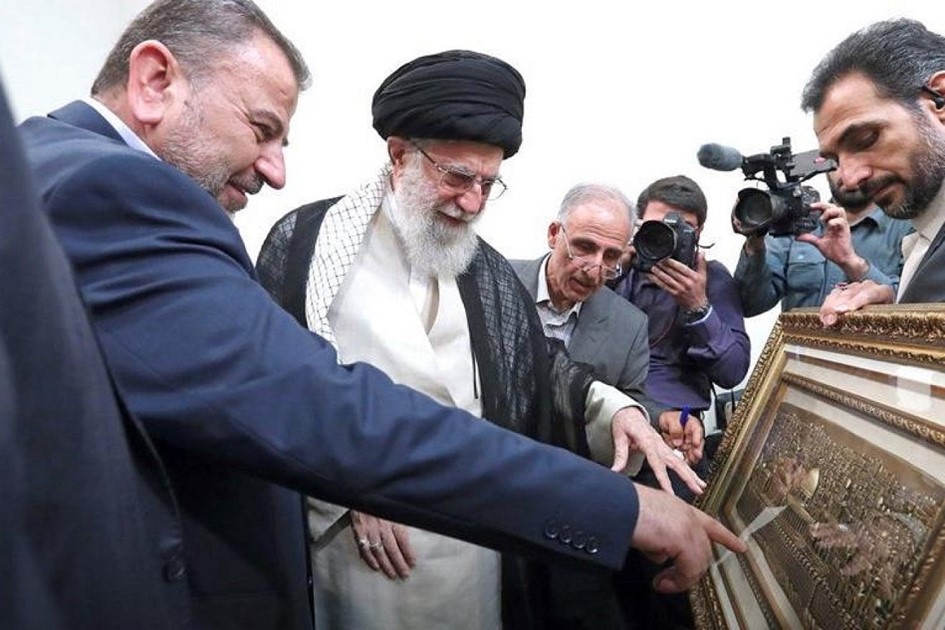Implications from the Death of Hamas’ Saleh al-Arouri
Just as the Islamic Republic of Iran prepared to mark the fourth anniversary of the death of the late Commander of the Islamic Revolutionary Guard Corps’ (IRGC) Quds Force Qasem Soleimani, news broke that Israel launched an operation that killed Hamas’ deputy politburo head Saleh al-Arouri. Arouri was a high-value target for both Israel and the United States. His demise will shake the IRGC’s Axis of Resistance.

Who is Saleh al-Arouri?
Arouri was born in 1966 near Ramallah. He was one of the founders of the military wing of Hamas—the Izz ad-Din al-Qassam Brigades. The U.S. government sanctioned Arouri as a Specially Designated Global Terrorist in 2015 when he was a member of the Hamas politburo who financed and organized military operations in the West Bank against Israel. He was also subject to a U.S. Rewards for Justice for up to $5 million. The notice cited his complicity in the kidnapping and murder of three Israeli teenagers in 2014, including Naftali Fraenkel, who held American citizenship. The United States also indicted Arouri as a co-conspirator in a Hamas financing racketeering scheme in 2004.
In 2017, Arouri became the deputy leader of Hamas’ politburo. In that same year, Qatar expelled him and Arouri decamped to locations like Lebanon.
Arouri was responsible for drawing Hamas closer to Iran, and spearheaded closer coordination among Hamas, Hezbollah, and the IRGC. Arouri first met Soleimani, then the Quds Force commander, in Syria. As he recounted to an interviewer in 2020, “I met Hajj Qasem for the first time in Damascus. It was in the presence of Abu Walid [Khaled Meshaal], the head of the movement back then. I had heard about Soleimani but had never met him before. So, I met him for the first time in 2010 or 2011. Then the relations grew stronger and there were multiple meetings with Hajj Qasem, recently and when I left for Beirut…I also travelled to Tehran multiple times.”
As Israel’s ambassador to the United Nations said in 2019, “with the help of Saleh al-Arouri, Hamas’ deputy political chief, and Saeed Izadi, the head of the Palestinian branch of the Iranian Quds Force, Iran is trying to turn Judea and Samaria into a fourth military front against Israel.” Arouri played an integral role in the establishment of joint operations rooms consisting of the IRGC, Hamas, and Hezbollah during successive rounds of fighting with Israel, including in April 2023. The IRGC’s Quds Force’s Commander Esmail Ghaani participated in these consultations in Beirut. Additionally, The Wall Street Journal reported that Arouri participated in some of the biweekly meetings held among the IRGC, Hamas, Hezbollah, and Palestinian Islamic Jihad since August 2023 in the leadup to the October 7 massacre in Israel. Arouri’s foreknowledge of the events to come on October 7 can be seen in public remarks he made in August 2023 warning that “we are preparing for an all-out war. We are closely discussing the prospects of this war with all relevant parties.” Such comments coinciding with the allegations of biweekly planning discussions among Iran’s broader Axis of Resistance remain significant.

Iran’s supreme leader will also feel Arouri’s death. Arouri met with Khamenei personally over the years as a Hamas representative, including in 2019. Arouri in that same 2020 interview recalled that during one of those discussions, “the supreme leader said to Hajj Qasem: ‘It is our duty to provide anything the resistance in Palestine and Hamas need.’ Hajj Qasem answered him: ‘I will take care of this.’ Then we had a private meeting. As I’ve told you, he would come up with ideas how to support the resistance with everything it needs.”

Next Steps
Arouri’s death sets up a test for Hezbollah’s Secretary-General Hassan Nasrallah. He warned Israel in August 2023 that “any assassination on Lebanese soil against a Lebanese, Syrian, Iranian, or Palestinian will be met with a decisive response. We will not tolerate this, and we will not allow Lebanon to become a new killing field for Israel.” Thus far in the post-October 7 context, there were already tensions between Hamas and Hezbollah leadership, with resentments from some Hamas officials that Hezbollah had not escalated in a significant way in support of their organization. But in the end, Nasrallah, in coordination with the Iranian leadership, will weigh multiple equities, including Hezbollah’s position in Lebanon and the balance of deterrence against Israel in deciding on a response. He may escalate, but it will likely be carefully calibrated.
Arouri’s death will also impact Hamas’ future. Reporting surfaced in recent weeks of the division in Hamas leadership between the “Qatari camp”—like Khaled Meshaal and Moussa Abu Marzouk—and the “Iranian camp,” comprised of Arouri and Hamas leader in Gaza Yahya Sinwar. Both allegedly differ over whether to join the Palestinian Liberation Organization in a new governing structure for Gaza. The demise of Arouri, having been a strong pro-Iran voice in the organization, will influence those deliberations.
Jason M. Brodsky is the policy director of United Against Nuclear Iran (UANI) and a non-resident scholar at the Middle East Institute’s Iran Program. He is on Twitter @JasonMBrodsky.
Receive Iran News in Your Inbox.
Eye on Iran is a news summary from United Against Nuclear Iran (UANI), a section 501(c)(3) organization. Eye on Iran is available to subscribers on a daily basis or weekly basis.